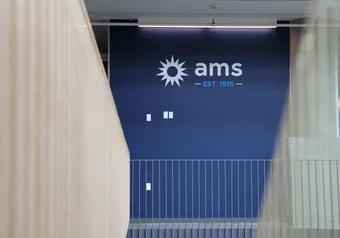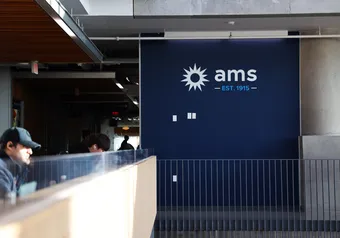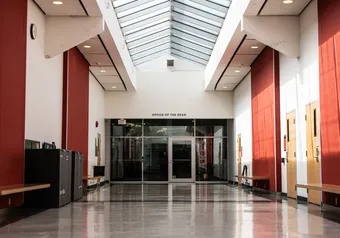Third-year computer science student Oscar Yu has been more anxious leaving the house during the COVID-19 pandemic, not due to a fear of becoming sick, but of being unable to communicate.
For a hearing person, even though nonverbal expressions are hidden behind masks, they can still understand what other people are saying without much trouble. For a deaf or hard of hearing person, physical distancing and masks are a barrier to everyday interactions.
Sign languages have grammar and vocabulary grounded in facial expressions and people — especially those who are deaf or hard of hearing — use lip reading for speech information. Hearing aids also typically help only at a short distance, posing a problem when physically distancing.
“I didn’t think I [relied on reading lips], but after this pandemic … I definitely realized how much I depend on [it] and … I find myself needing to be closer to people to be able to have their voices reached to me,” said Yu, who has profound deafness and uses cochlear implants.
With the province gradually reopening and many businesses requiring employees to wear masks and maintain distance, Yu said that he has only been out when accompanied by someone else.
“A lot of times I just cannot hear what is being said, so I haven’t been able to [or] I haven’t really been comfortable with communication with people without someone to help.”
At a restaurant, Yu could not understand what the employee was saying because of their mask, their three-metre distance from him and the background music playing. He was only able to respond after his girlfriend repeated the information back to him.
‘Pressure and anxiety’ to educate others
President of the International Federation of Hard of Hearing Persons and the Canadian Hard of Hearing Association's (CHHA) Vancouver Branch Dr. Ruth Warick often has to explain having hearing loss during typical activities like going to a grocery or drugstore.
“I’m just one of many people,” said Warick.
Bowen Tang, director of the CHHA BC Chapter's Youth Peer Support Program and teacher for the deaf and hard of hearing said he feels there is a certain “pressure and anxiety” to do the work to educate public health officials on accommodations for deaf and hard of hearing folk amid a pandemic.
Warick and Tang also noted that the challenges masks cause provide opportunity to spread more awareness and education on inclusiveness for deaf and hard of hearing folk.
In an email to The Ubyssey regarding communication accessibility, Warick emphasized, “Speak at a moderate rate and repeat oneself if asked. Exercise patience during communication.”
With no clear idea of when UBC will return to in-person classes and what it will look like, there are ways to adapt instruction under circumstances where masks and physical distancing are enforced.
Yu would prefer instructors to wear a mask where one can still read lips.
“It would be helpful for many people. And I don't think it's just for people who are deaf or hard of hearing … we're all equal because people do rely on facial expressions a lot when communicating.”
Existing DIY clear face mask designs provide a transparent window at the lip region, but are currently not as readily available for purchase as opaque masks are. Some may also become foggy from breath making it hard to see through, but can still be more helpful than obstructive masks.
In a statement to The Ubyssey, Janet Mee, director of UBC's Centre for Accessibility, recognized the communication challenges masks pose and said the Centre “has created an internal working group that is working closely with provincial experts to explore a range of solutions.”
“These include live captioning provided by contract professionals, captioned media for recorded learning materials, machine captioning, and possibly clear masks,” Mee wrote, noting that students who require disability-related accommodations should contact the centre.
Other classroom accommodations Yu and Tang mentioned were seating arrangements where people who are deaf or hard of hearing sit closer to the instructor. Warick also suggested instructors writing out key concepts and assignment information would help hearing, deaf and hard-of-hearing people alike.
“The mindset that we want to encourage is that the accommodation that we could get can benefit everyone and not just a particular group,” Tang said.
First online
Share this article







